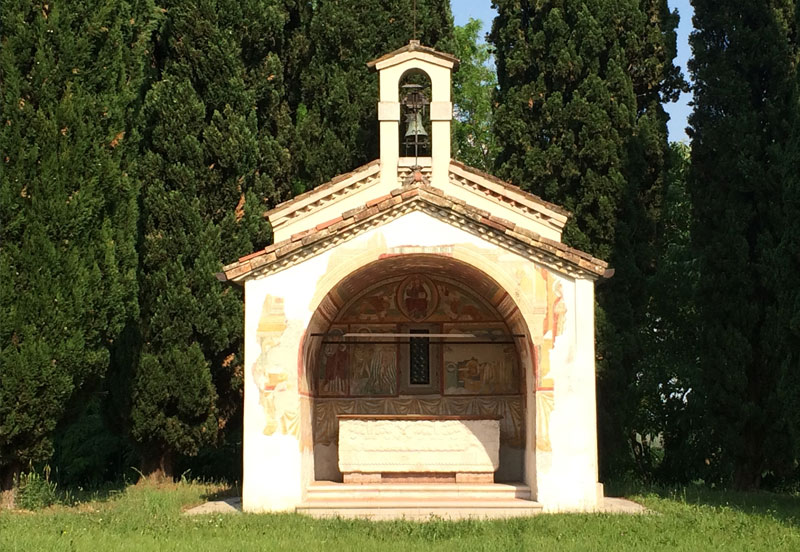
The church that no longer exists
An old photograph of the Civic Museums of Udine tells us how the Church of Saint John of the Hermits, on the road to Udine, and demolished in 1909, looked like: a small single-nave church with a steeple featuring blind arches under the eaves line, preceded by a large 17th-century portico. We come across it on the road from Spilimbergo to the new Dignano bridge, surrounded by tall cypresses and a beautiful lawn. Of the 1304 building, associated with the Confraternity of the Flagellants, only the triumphal arch – reduced today to an open-structure façade – and the apse still exist. A small steeple, inspired by the pre-existing one, rests on the gables of the wall that has been erected behind the apse.
There is no trace of the annexed hospice (lazaret), which was demolished last century. The church, exposed to all weathers, houses a ruined 19th-century canvas depicting St John the Baptist. Far more valuable are the 14th-century fresco with Christ Pantocrator and symbols of the Evangelists in the lunette, the Mystic Lamb and decorations in the vault, the traces of the Annunciation on the piers, figures of the Apostles (some of which are still visible), the Beheading of St John the Baptist, the Feast of Herod, and the Dance of the Seven Veils on the side and bottom walls.
An example of “Previtali” painting in Friuli that hint at certain frescoes in the Bolzano or Friuli areas (e.g. the ones in the church of Saint Juliana in Aviano), in which Byzantine and Romanesque nuances blend with Gothic details. The typical local naïveté in rendering the somatic traits suggests that these frescoes were made by a local artist.
The headstone
In the church, you can also find faded traces of the decoration by Marco Tiussi (1554). Outside, the 16th-century headstone (1540) with the coat of arms of St John’s Hospital bears witness to the corporal works of mercy in burying those who died in the hospice. Another 16th-century stone fragment (brought here from Travesio in 1935) now serves as an altar table. The base onto which it rests carries a motto in Latin that says “What comes from justice and mercy guides us to peace.”
